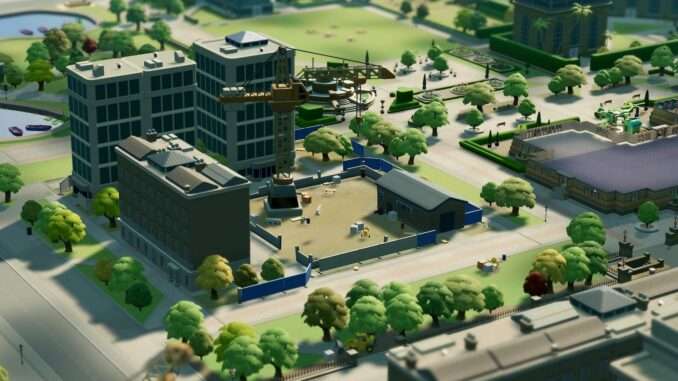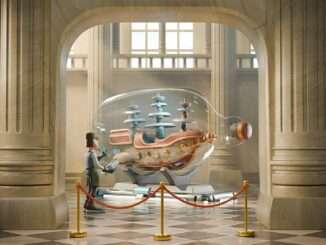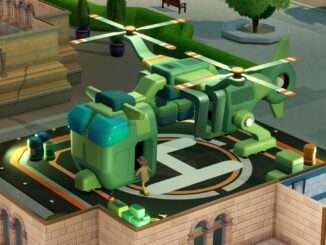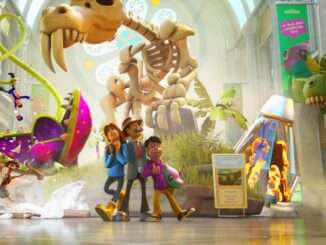
Creating a Mural Mod
In this guide we’ll be skipping over the finer details of the modding tools, instead focusing on quickly getting you living out your dream of having your most prized work of art displayed on your museum’s wall as a mural.
To start with you will however need to have followed our initial modding setup guide.
Step 1: Create Your Item Mod Config
The first thing you’ll need to do is create a new Item Mod Config. This is the file that describes everything about your item mod (including specifying which item you’re basing your mod on, what it’s going to look like, how much it costs in-game etc).
To do this let’s create a new directory in the Assets folder of the project for our mod to live in, select the Assets folder in the project view in Unity and then Right Click -> Create -> Folder and name it MyMuralMod:

Next we’ll create our Item Mod Config in our new folder. Open the folder we just created, then in the same window Right Click -> Create -> TPS -> Config -> ItemModConfig.
Name this MyMuralModConfig (or whatever you like) and then select it. You should now see an Inspector on the right showing your currently empty mod config:

Step 2: Choose an Item to Mod
As we want to make a picture, let’s try basing our mod on the Unihornus Mural item. Start typing this into the Search Items box and then select it when it appears.
The inspector should now transform to reflect that this is the item you’re now modding:

Step 3: Give Your Item a Name and Description
As you can see there are a lot of things we can modify here. For the sake of this quick picture mod let’s just enter our own Item Name and Item Description:

Step 4: Specify That We Only Want to Change Textures
Next we’ll want to specify that we’re only interested in updating the textures of this item (not the meshes), this presents us with a slightly simpler pipeline so we can get our picture in the game quickly and easily.
Look down the list of possible options until you find one labelled Texture Only Mod and tick this option. When you do this you should see the Meshes option disappear and be replaced with a Textures list like so:

Some items have multiple meshes to supply with textures, and sometimes these will be labelled as LODs (Level Of Detail meshes), in such cases you can just drag your texture into each of the LODs.
Step 5: Modify / Provide a Texture
Next you’ll want to provide an image of your own, but it will need to be a texture that maps to the Geometric Canvas mesh in-game. Normally at this point I’d reference the source assets for the game (where you can find the original texture and then modify it), however we already have an example mod in the project with the texture provided to speed this up!
Navigate back to the project view and look in the Assets/ExampleMods/MuralMod/Textures directory. Here you’ll find a texture named T_Decoration_Prehistory_Mural_Extinction_DIFF. This is the texture we’ll base our one on. Right click the file and select Show In Explorer. You can now open this file in your favourite image editor program, we recommend using Adobe Photoshop or a free one such as GIMP (GNU Image Manipulation Program).
If you want to edit the texture of a different item in the game, please refer to the Extracting the original game assets for reference section of our more in-depth modding guide here.
Step 6: Hook Up Our New Texture to Our Item Mod Config
Once you’re happy with the changes you’ve made to the texture, we recommend saving it as either a .TGA or .PNG file (other filetypes may work too, such as .JPG files). Place the new file in the directory we made for the mod (Assets/MyMuralMod if you’ve followed my naming).
Unity should import your new texture automatically, or you can right click the MyMuralMod directory click Reimport to force Unity to do it. Navigate to your new texture in Unity and select it, then in the inspector check the Addressable tick box in the top left. For more details on importing textures you can refer to the Importing Textures section of our main guide here.
Now select the Item Mod Config that we made earlier and drag your new texture into the texture field:

Step 7: Prepare to Export
The next step involves clearing out the example mods from the Addressables groups and then adding our one. From the menu at the top select Window -> Asset Management -> Addressables -> Groups. Expand each of the groups in the list and you should see something like this:

Right click the CanvasModData group and select Remove Group(s), do the same for the AlienPlantModData group. Next right click both of the files under the ModConfigs group and select Remove Addressables.
You should now be left with this (note that if you made your texture Addressable in an earlier step, that may appear be in the ModConfigs (Default) group):

Now right click in this window and select Create Group -> Packed Assets. A new group should appear, rename this group to MyMuralModData. Next drag your Item Mod Config into the ModConfigs group, and then your texture into the MyMuralModData group (if your texture automatically appeared in the ModConfigs group earlier, just drag it down into the MyMuralModData group).
We want these to be separate so the game knows only to load the data for your mod when needed, whereas the mod configs remain loaded all the time. Everything should now look like this:

Step 8: Export Your Mod then Test In-game!
We’re almost done! In Windows Explorer navigate to the Assets/Exported~ directory of the project (if it exists, if you’ve never exported a mod before then it may not exist yet which is fine) and ensure the directory is completely empty. This is where our mod files will be exported to, it’s important that you empty this directory each time you export a mod.
Now back in Unity, go back to the Addressables Groups menu (as above) and select Build -> New Build -> Two Point Modding Build Script. This will export your mod into the Exported directory.

After selecting ‘Two Point Modding Build Script‘ you will be prompted with a ‘Build Target Select‘ window.

From here you can toggle which platforms you’d like your mod to be used on (currently only PC is supported). Please note that PC covers Mac and Linux as well. The ‘Exported~‘ folder will separate the mods into their own platform based folders.

Next, you’ll want to copy all these files from the PC folder into the staging directory for mods in Two Point Campus. This can be found in your AppData directory (normally C:\Users\YOUR USERNAME\AppData\LocalLow\Two Point Studios\Two Point Museum).
In this folder create a new folder called Mods if it doesn’t exist already, and within there a subfolder for your mod. Copy all the files from the Assets/Exported~ directory above into this new folder, It should look something like this:

Now load up the game and your item should appear in the list! It will have the same icon as the Unihornus Mural for now, and as it’s a decorative item it will appear under the Decorations tab.
You can find your modded items more easily in-game using the filters in the item menu; select the Mods tab along the top (Note: sometimes it doesn’t appear immediately, alternatively you can start typing the name of your mod in the Search bar at the top).

Here’s my work of art:






Be the first to comment